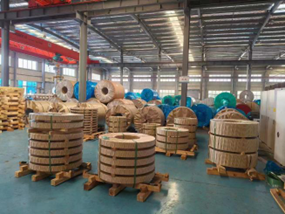Stainless steel strip is a versatile material widely used across various industries due to its excellent properties, such as corrosion resistance, strength, and formability. When sourcing from stainless steel strip suppliers, understanding the minimum thickness of the material is essential for ensuring it meets the specific requirements of your applications.
Defining the Minimum Thickness
The minimum thickness of stainless steel strip can vary depending on the manufacturing process and the specific grade of stainless steel. Typically, stainless steel suppliers offer products with thicknesses starting from as low as 0.05 mm (0.002 inches).
Factors Influencing Minimum Thickness
Several factors influence the minimum thickness of stainless steel strip, including:
Manufacturing Capabilities: Advanced manufacturing techniques allow for the production of extremely thin stainless steel strips.
Material Grade: Different grades of stainless steel, such as 304, 316, and 430, have varying properties that affect the achievable thickness.
Application Requirements: Specific applications may demand thinner strips for better performance or weight reduction.
Common Minimum Thickness Standards
Based on industry standards and common practices among stainless steel strip suppliers, the following are typical minimum thicknesses for various grades:
Austenitic Stainless Steel (304, 316): Minimum thickness around 0.05 mm (0.002 inches).
Ferritic Stainless Steel (430): Minimum thickness around 0.1 mm (0.004 inches).
Martensitic Stainless Steel (410): Minimum thickness around 0.1 mm (0.004 inches).
Measuring Thickness
Accurately measuring the thickness of stainless steel strip is crucial to ensure it meets the required specifications. The most common tools used for measuring thickness include:
- Micrometers: Provide highly accurate measurements of thin materials.
- Calipers: Useful for quick and precise measurements.
- Thickness Gauges: Designed specifically for measuring metal thickness.
Quality Control by Stainless Steel Strip Suppliers
Reputable stainless steel strip suppliers implement rigorous quality control measures to ensure their products meet the specified thickness and other critical properties. These measures include:
- Inspection and Testing: Regular inspections and tests to verify thickness and uniformity.
- Certification: Providing certification and documentation for each batch of stainless steel strip.
- Customer Support: Offering technical support and guidance to help customers select the appropriate thickness for their applications.
Applications Requiring Minimum Thickness
Various industries benefit from using stainless steel strip with minimal thickness, including:
- Electronics: Thin strips are used in connectors, springs, and other electronic components for their conductivity and durability.
- Medical Devices: Thin stainless steel strips are used in medical instruments and implants due to their biocompatibility.
- Automotive: Used in gaskets, seals, and flexible components to reduce weight and improve efficiency.
- Aerospace: Thin strips are used in lightweight components to enhance performance and fuel efficiency.
Conclusion
Stainless steel strip suppliers offer a range of thicknesses, starting from as low as 0.05 mm, depending on the grade and manufacturing capabilities. By ensuring accurate measurements and adhering to industry standards, you can achieve the desired performance and quality for your projects.



